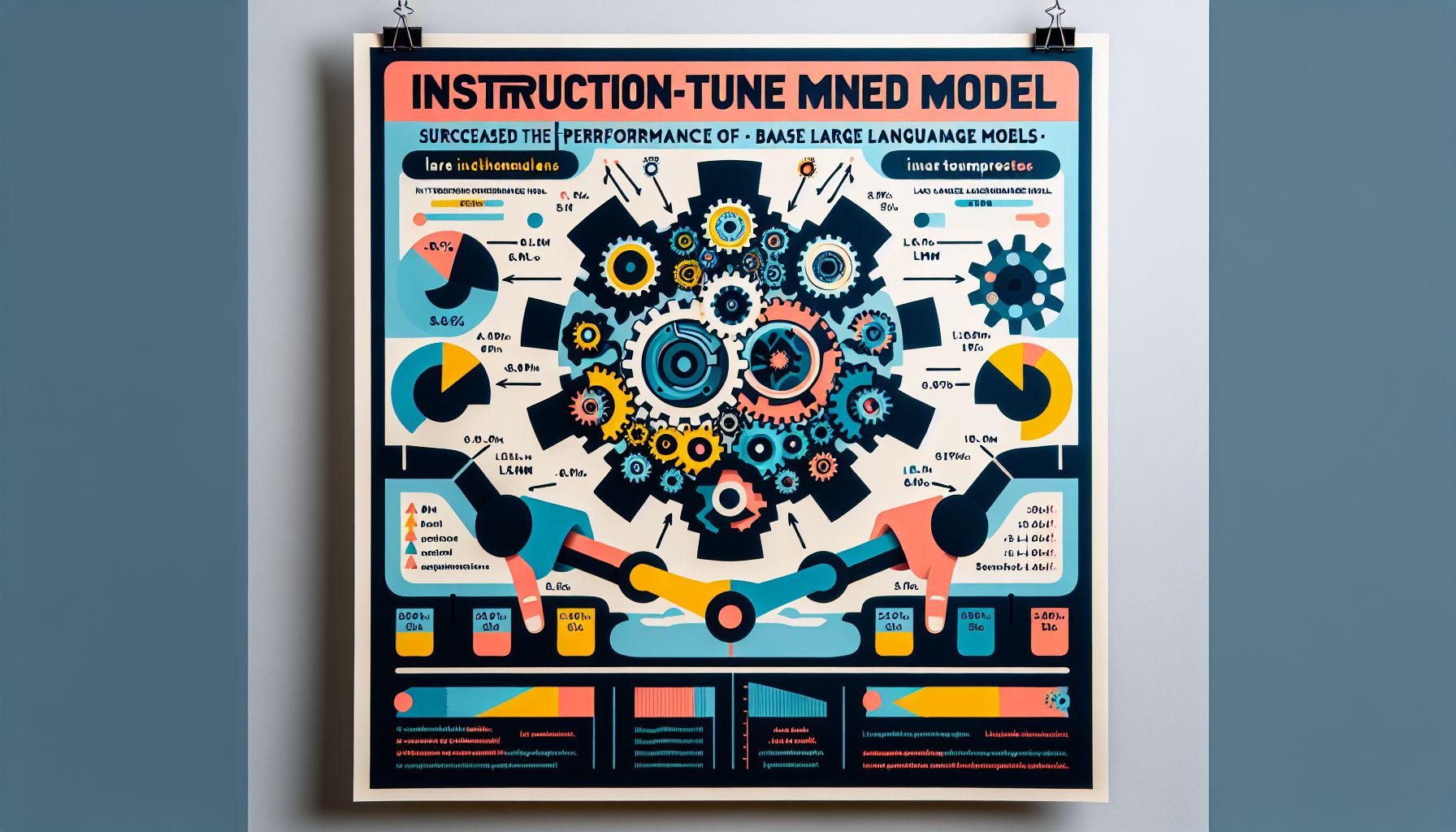📌 Let’s explore the topic in depth and see what insights we can uncover.
⚡ “Did you know that models trained for specific tasks have an edge over their generic counterparts? Let’s dive into how instruction-tuned models are acing performance charts, leaving base Language Learning Models (LLMs) far behind.”
Hello there, tech enthusiasts! Today we’re going to dive into the realm of language learning models (LLMs) and explore how instruction-tuned models stand out in particular tasks. If you’re a data scientist, an AI enthusiast, or just someone who likes to keep tabs on the latest tech trends, then this post is for you! 🚀 In the world of AI, base language learning models are the backbone of numerous applications such as translation, text generation, and sentiment analysis. However, as we progress in this field, we are beginning to see the rise of instruction-tuned models that are showing commendable performance on specific tasks. Curious to know how? Buckle up, as we’re about to take a deep dive into this fascinating world.
🔍 Understanding Language Learning Models (LLMs)

"Surpassing Base LLMs: The Power of Instruction-Tuned Models"
Before we dive into the depths of instruction-tuned models, let’s take a step back to understand what base language learning models (LLMs) are. LLMs are a type of AI models specifically designed to understand, interpret, generate, and make sense of human language. These models have been the foundation of numerous applications we use daily, like Google Translate, Siri, and Alexa.
Some examples of base LLMs include:
**BERT (Bidirectional Encoder Representations from Transformers)
** An open-source model developed by Google, widely used for natural language processing tasks.
**GPT (Generative Pretrained Transformer)
** This model, developed by OpenAI, excels at generating human-like text.
**RoBERTa
** An optimized version of BERT, developed by Facebook’s AI team. These models have their strengths, but as we’ll see, there’s room for improvement in specific tasks. And that’s where instruction-tuned models come into play.
🎯 The Concept of Instruction-Tuned Models
Instruction-tuned models are a class of LLMs that, as the name suggests, are tuned or adjusted according to specific instructions related to the task at hand.
Imagine having a versatile artist who can paint, sculpt, and make music. If you give them a broad instruction like “create something,” they might come up with something decent. But if you tell them specifically to “paint a sunset,” they’ll be able to use their skills more effectively to deliver a beautiful painting. That’s what instruction-tuned models do. They take a base LLM and fine-tune it according to the specific requirements of the task.
Here’s how the process works:
**Pre-training
** The base LLM is pre-trained on a large corpus of text to learn the ins and outs of the language.
**Fine-tuning
** The base LLM is then fine-tuned on a smaller, task-specific dataset. The process involves adjusting the model’s parameters to optimize its performance for the specific task.
**Instruction-tuning
** An additional training step where the model is further optimized based on specific instructions related to the task.
📈 How Instruction-Tuned Models Outperform Base LLMs
Instruction-tuned models have shown to outperform base LLMs in a variety of tasks. Here’s why:
**Task-Specific Optimization
** By tuning the model based on the specific instructions, we ensure that the model is well-optimized for the task at hand. It’s like having a tailor-made suit as opposed to off-the-rack.
**Increased Efficiency
** Instruction-tuned models tend to perform tasks with greater efficiency. 🔍 Interestingly, because the model has a clear understanding of what is expected, reducing the chances of irrelevant outputs.
**Improved Accuracy
** With the specific instructions, the model is better equipped to deliver accurate results. The extra layer of instruction tuning helps the model to focus on the elements that matter the most for a given task. For instance, say we have a task of text summarization. A base LLM, even when fine-tuned, might struggle to generate a concise and accurate summary. However, with instruction tuning, we can guide the model to focus on the most important details and produce a more precise summary.
🧩 Practical Applications of Instruction-Tuned Models
Instruction-tuned models have a broad range of applications. Here are a few:
**Text Summarization
** As mentioned earlier, instruction-tuned models excel in tasks like text summarization where the model needs to extract key details and present them concisely.
**Sentiment Analysis
** In tasks like sentiment analysis, instruction-tuned models can be guided to focus on the sentiment-laden aspects of a text, thereby improving accuracy.
**Translation
** For translation tasks, instruction tuning can guide the model to focus on maintaining the semantic meaning of the source text, leading to higher quality translations.
🧭 Conclusion
In the dynamic landscape of AI, instruction-tuned models are making waves by enhancing the performance of base language learning models in specific tasks. By adding an extra layer of instruction-based tuning, these models become more efficient, accurate, and task-optimized. However, it’s essential to remember that instruction-tuning is not a one-size-fits-all solution. The effectiveness of this approach can significantly depend on the specific task, the quality of instructions, and the base LLM used. Therefore, as we continue to explore the potentials of instruction-tuned models, it’s important to experiment, iterate, and learn. So, whether you’re a data scientist looking to enhance your models, or a tech enthusiast keen on understanding the latest AI trends, instruction-tuned models are worth exploring. After all, in this era of customization, who wouldn’t want a model that’s tailor-made for the task at hand? Happy exploring! 🚀
📡 The future is unfolding — don’t miss what’s next!
